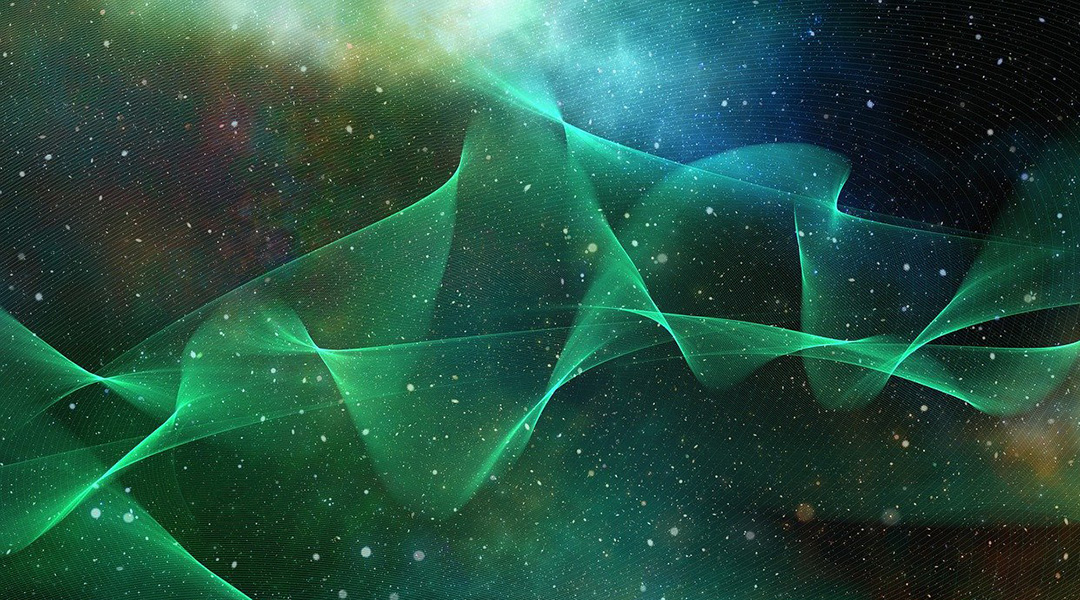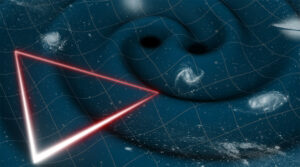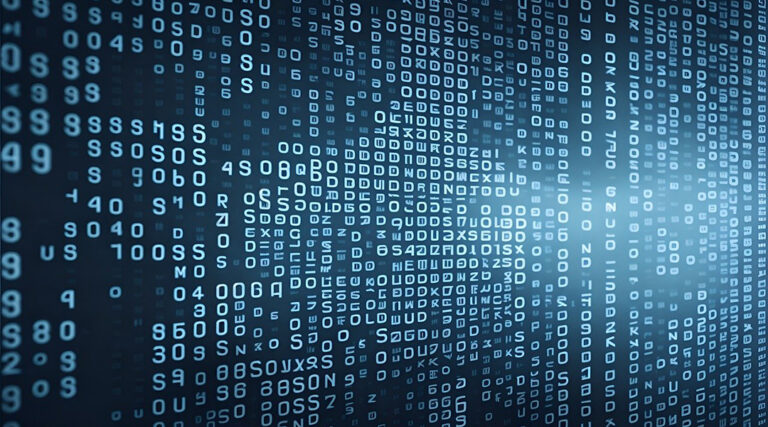A new study proposes using satellite-based single photon sources as a means of secure transmission of information across vast distances. This research not only promises unhackable communication but also opens doors to probing fundamental laws of quantum mechanics and delving into quantum effects in gravity.
“The most significant outcome of this work is a universal quantum architecture using a compact true single photon source for satellite-based quantum networks,” said Tobias Vogl, professor of quantum communication systems engineering at the Technical University of Munich in Germany and lead author of the study, in an email. “While this design demonstrates the ability of our photon source to emit single photons in space, it also allows us to test a fundamental postulate of quantum mechanics.”
Quantum mechanics enables secure communication
In the realm of communication science, quantum key distribution is a rapidly advancing frontier. It enables the transmission of an encryption key between two parties in a manner impervious to eavesdropping.
“For quantum key distribution, one encodes information into [quantum states of single photons],” explained Vogl. “The laws of quantum physics state that it is impossible to copy this single photon, and also impossible to read out the information without changing it, making any eavesdropping measurable.”
For this encryption method to be effective, it’s imperative that the photons carrying information are emitted one at a time. If multiple photons in the same state are emitted simultaneously, interception by an eavesdropper could go unnoticed, compromising security. But creating a single photon that is distinct from a coherent light source poses a formidable challenge due to the fundamental nature of light and limitations of quantum mechanics.
Many advanced technologies are used to achieve this, including quantum dots and single atoms. But Vogl points to a material known as boron nitride, which emits single photons due to the presence of defects in its structure – these serve as localized quantum emitters when appropriately manipulated and excited.
“Hexagonal boron nitride is a two-dimensional material consisting of nitrogen and boron,” said Vogl. “The pristine structure is an ordinary insulator without (visible) light emission; however, its structure with a defect can likely emit one photon at a time. This is due to the defect introducing additional energy levels into the electronic structure of the crystal, which can be excited only once and hence, also only emit one photon at a time.”
Satellites to the rescue
Yet, even with a robust single photon source like boron nitride, transmitting single photons over long distances using ground-based devices is a challenge.
“The fact that any eavesdropper cannot copy the quantum [photon] states also implies that we cannot copy the quantum states,” he explained. “This means that we cannot amplify the signal if it is transmitted over long distances, which are associated with a large signal damping. In optical fibers for example, the losses scale exponentially with distance.”
To get around this, Vogl and his team the researchers propose deploying single photon sources on satellites.
“The atmosphere becomes so thin above about 10 km altitude that there are no significant losses anymore,” Vogl said. “Hence, using satellites we can transmit single photon states over much longer distances. The goal is ultimately to achieve a global quantum internet.”
The team is currently working on the QUICK3 space mission, which aims to validate the hardware needed to develop a functional satellite-based quantum network in the future.
“QUICK3 stands for QUantum photonIsChe Komponenten für sichere Kommunikation mit Kleinsatelliten (quantum photonic components for secure communication with small satellites),” Vogl said. “It is aimed at developing the hardware needed for a satellite-based quantum link. The payload consists of an excitation laser system, a single photon source based on a fluorescent defect in the 2D material hexagonal boron nitride, a quantum interferometer, and single photon detectors.”
“After integrating all components together on a small satellite, our QUICK3 mission will evaluate their functionality in space on a 3U CubeSat (a small satellite with about 3.5 liters of volume),” he continued. “A constellation of satellites equipped with the hardware developed in the QUICK³ mission could be used as a backbone for a quantum internet. The launch was initially scheduled for 2024 but now has been delayed to 2025.”
While the QUICK3 mission is expected to yield valuable data, the hardware to be tested won’t be immediately deployable for real quantum communication. For example, the single-photon detector will be housed inside the satellite rather than on the ground, which is needed for the actual quantum network.
To realize satellite-based quantum communications, existing equipment limitations must be addressed. For instance, the photon source must be more potent and directional.
“Our mission is mostly a technology demonstrator and component test,” explained Vogl. “The satellite cannot yet establish a real quantum key distribution link. After a successful mission we plan a follow-up mission demonstrating quantum key distribution between the satellite and a ground station using our components.”
“We are currently building a local quantum network at the Technical University of Munich, essentially limited to the metropolitan area of Munich,” he added. “Similar networks are being established all around the world right now, for example, in other cities in Germany, Singapore, China, USA, Canada, UK to name only a few. With our satellite we could connect our local network to the other local networks and demonstrate a milestone toward the quantum internet.”
Probing the fundamentals of quantum mechanics
Beyond facilitating secure communication, QUICK3 offers a unique opportunity to investigate fundamental principles of quantum mechanics by studying processes involving emission, propagation, and detection of single photons in space while comparing them with Earth-based conditions.
These studies can also give important insight into the mysteries of quantum gravity, which have thus far been difficult to study due to the very weak interaction of elementary particles with gravitational fields.
“One of the holy grails of physics is the combination of gravity and quantum physics, which has proven to be difficult so far,” concluded Vogl. “Some of these attempts of quantum gravity theories predict modification to our standard quantum theory. Essentially, this is what we are testing, by making a twin experiment on the ground and on the satellite using a quantum interferometer. If there is a coupling due to a gravitational field, our experiments will reveal this.”
Reference: Najme Ahmadi, et al, QUICK3 – Design of a Satellite-Based Quantum Light Source for Quantum Communication and Extended Physical Theory Tests in Space, Advanced Quantum Technologies (2024). DOI: 10.1002/qute.202300343
Feature image credit: geralt on Pixabay












+ There are no comments
Add yours